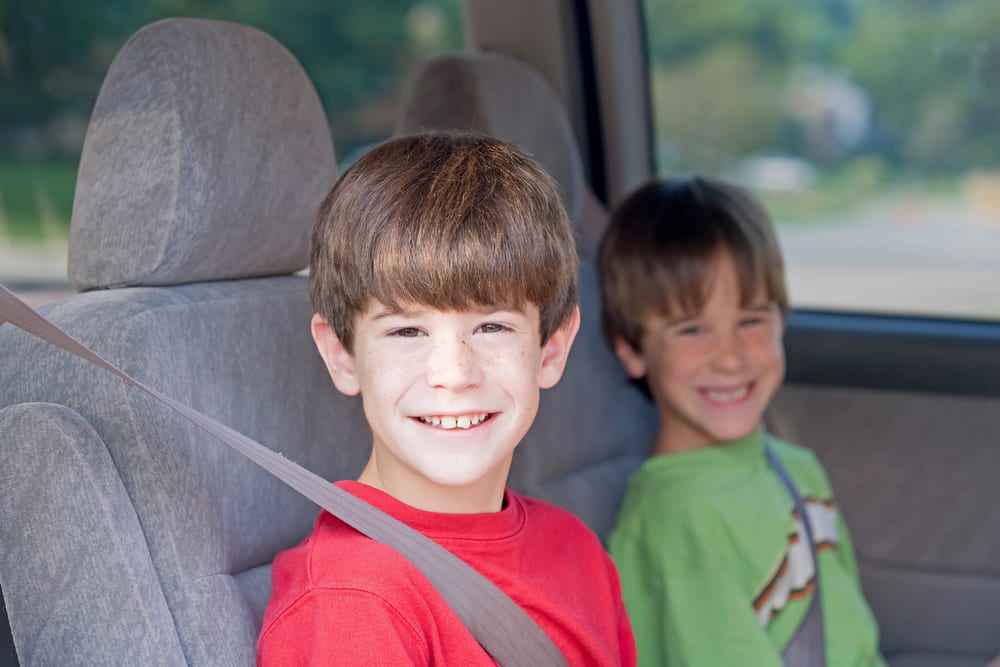

In all major life events, we often consider age as the prime factor in determining readiness – from when a child is ready to start school to when they can obtain a driver’s license, and everything beyond and between. Parents also habitually dole out new responsibilities to their children when they reach a certain age, so it’s reasonable for a parent to use age as a determining factor in when to transition from car seats to seat belts as well. But age isn’t the only consideration to take into account when preparing to make the leap – there are a few other, equally important and often overlooked factors as well.
The most important considerations a parent should make when deciding to transition to a seat belt are weight and especially height. While age is a good starting point, what’s most important is to consider how comfortably and safely your child fits into the car seats or booster seats that are designated for their size. A child should be kept in a rear-facing seat as long as possible, because it’s the most ideal position to protect the head in the event of a sudden deceleration.
A quick guide to car seat and seat belt usage by age is as follows, or you can input your child’s information here to find a car seat that works for you. Different manufacturers and models of car seats can have different height and weight requirements, so make sure you check for them when purchasing. For all options, the back seat is the best place for your child to be harnessed.
Newborn to 12 months: Rear-facing car seats
1-3 years: Front-facing car seats. It’s usually best to stay in rear-facing seats as long as your child’s size allows.
4-7 years: Front-facing car seats with harness and tether, until the child outgrows the height limit.
7-12 years: Booster seat with seat belt, until your child is tall enough for a seatbelt to fit them properly - across the upper thighs, chest and shoulder.
There are some laws in place per state mandating when a child is required to be in a rear-facing car seat; these laws can change yearly, so check with your state’s government website to ensure that you’re up to date with the current regulations. For example, effective January 2017, California law requires all children under the age of two to be strapped into a rear-facing car seat, unless they are over forty pounds in weight or forty inches in height.
Rear-facing car seats
Infants and toddlers should always be strapped into a rear-facing car seat with a five-point harness in the back seat of any automobile without exception, especially in cars fitted with passenger-side airbags, for maximum safety. But after the toddler years slide into early childhood, children will usually, but not always, outgrow the maximum height limit for almost all commercially-produced rear-facing infant and toddler car seats, usually at around four years old. However, just because they are no longer in the toddler phase doesn’t mean they’re ready to jump straight into booster seats and seat belts.
Front-facing car seats
When the child is no longer small enough to comfortably and safely fit inside of a rear-facing car seat, they can instead be harnessed into a forward-facing car seat. This is usually recommended near three years of age, but again, size is the key factor, especially height - children will usually outgrow the seat in inches rather than pounds. If your child is too big for a rear-facing car seat, it’s time to make the transition into forward-facing seats, regardless of age. Again, rear-facing seats are the safest possible for children, and should be used as long as physically possible.
Booster seats
Standard seat belts are manufactured with the safety of a fully-grown adult in mind, not a small child. While the lap belt secures the body at the waist, the shoulder harness is meant to cross the chest and go over the right shoulder, securing the body against the seat and preventing it from sliding beneath the lap belt in the event of a collision, a phenomena commonly known as “submarining.” Small children are usually too short for the shoulder harness, increasing their risk of submarining, so even if they have outgrown front-facing car seats, they should be still strapped into a booster seat for the meantime.
The booster seat is designed to raise the child up so that the shoulder harness can cross their chest and shoulder in the same way that adults are meant to wear it, and are the only type of seat where height alone determines how long it should be used. If your child cannot sit in the seat and comfortably bend their legs over the edge while sitting with their back flat against the back of the seat, they’re still too small for a seat belt and should be kept in a booster seat, regardless of how old they are – although they won’t thank you for it if they’re twelve years old and still on the smaller side.
So when is your child ready to use a seat belt?
The magic number that determines readiness in most other aspects of life is age, but in the case of seat belts versus car seats, it’s height first, weight second, age third. Use your child’s height in comparison to the maximum safe allowance of any child restraint system, and remember - cars are made for adults and seat belts are no exception. It’ll take a little growing up before your child is ready to take the grown-up chair.



